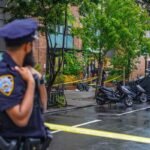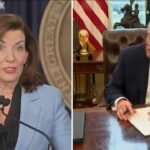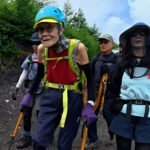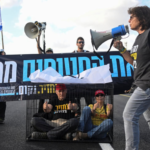Tuesday, May 7, 2024
Year : 2, Issue : 19
Desk repost: Over the past month, the USA has been rocked by protests and encampments spreading across its university campuses. After a campus occupation by students in Columbia University was foiled by the police with prior authorisation from the university president on April 18 — just a day after it began — the protests spread throughout the east coast and the rest of the United States.
For most people, these scenes are unprecedented, as campus unrest, police crackdowns, and the arrest of hundreds of students and faculty members are not usually associated with a developed nation like the US.
American campuses — home to some of the best and most prestigious universities in the world where numerous world leaders in politics and academia have spent their early years — have a potent history of student movements that lead to drastic change. From the civil rights movement to the Vietnam war protests or protests against apartheid in South Africa, American universities have risen up during key moments in history against their very own government and social establishments.
The Civil Rights Movement
Between the 1950s and 1960s in America, the civil rights movement was a series of key social movements that sought to end racial segregation, disenfranchisement, and discrimination. Some of the watershed moments within the movement involved black students, who challenged the legal frameworks of segregation that led to important conversations across the US, eventually culminating into lasting change.
For example, the Greensboro sit-ins were a series of protests held in 1960 in Greensboro, North Carolina, through which four students of the North Carolina Agricultural and Technical State University — Joseph McNeil, Franklin McCain, Ezell Blair Jr, and David Richmond — decided to stand against segregation.
They decided to go to a retail store called Woolworth, whose service was racially segregated, and attempt to buy lunch there. When they were denied service, the four students simply refused to leave their seats until the store closed. The next day, more students joined, and soon, the protest spread. While many students were arrested because of these peaceful protests, this led to the Woolsworth store and many other establishments repealing their segregationist policies.
From this network of sit-in protests emerged the Student Nonviolent Coordinating Committee (SNCC), who coordinated student protests against segregation across the USA. They organised the Freedom Rides, a form of nonviolent protest against the Southern states’ practice of segregating interstate travel, and played a major role in organising the March on Washington, a protest action that became famous because of Martin Luther King Jr’s “I have a dream” speech.
The SNCC was also instrumental in registering black voters in the deep south and enabling them to practise their democratic rights. However, the organisation later split over political disagreements and eventually dissolved.
The Civil Rights Movement ended in 1968 with the passing of the Civil Rights Act.
Vietnam war protests
The Vietnam war, as it dragged along in the late 1960s, had become highly unpopular in the US. Protests started popping up across the country, and university campuses became a hotbed as young, politically aware people who did not wish to be drafted or were pacifists became vocal against the war.
Even then, Columbia University took up a central role in the movement. Unlike 2024, students occupied university buildings instead of establishing encampments. Yet, the response then was the same as now. Police forcibly removed protesters who wanted the US to pull out of a war that was taking place thousands of kilometres away from its shores, and killing thousands of American soldiers and Vietnamese civilians.
The student protests hit a crescendo in Kent State University in Ohio, in May, 1970. Students were protesting the war in Vietnam and the invasion of Cambodia, and two days after it started, the National Guard was called upon them. On May 4, the National Guard opened fire on protesters and killed four people — Allison Krause, Jeffrey Miller, Sandra Scheuer, and William Knox Schroeder.
In the aftermath, large-scale student strikes and protests took place, even in front of the White House, and the anti-war cause became a central issue in US politics at the time.
The war in Vietnam eventually ended in 1975.
Protests against apartheid in South Africa
The apartheid regime in South Africa — a government with racist ideologies and segregation as its foundation — had become something of an embarrassment for the rest of the Western world by the 1980s, but not a lot of pressure was being exerted globally in order to enact significant change.
Students across America took matters into their own hands, and once again, led by Columbia University, started to press for change.
The demand at that time was similar to what is being demanded by students now. Students wanted universities to divest from South Africa, cut direct business and economic ties and pull out of deals with companies that benefited from the apartheid regime in that country. Columbia was the first to listen to its students, and soon, 155 universities joined them in this action.
In 1986, even the US government felt it was time to take action, and passed the Comprehensive Anti-Apartheid Act, whose aim was to pursue no new cooperation with the South African government unless apartheid was repealed.
Apartheid eventually ended in South Africa in the early 1990s.
While student protests in the US are not as common as they might be in a place like Bangladesh, they are not new. American students have stood up against some of the worst wrongdoings of their own government and its allies in the past, which is why the protests against Israel’s war in Gaza is such an important moment in the history of this conflict. It remains to be seen if the government takes these protests seriously, but it is clear that even the citizens of the US, Israel’s greatest ally, are starting to see the injustice and lack of humanity in what’s going on in Palestine.







